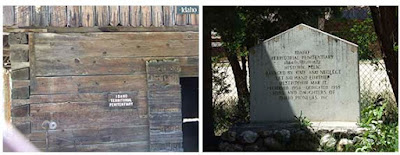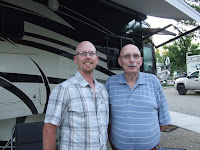Saturday, June 25, 2016
Today we ventured back
downtown to get a better picture of the State Capital
Building
We did stroll through the
downtown Saturday morning marketplace.
They close off 8th Street
The real reason for our trip
into downtown was to go to the Basque Block and take in their Cultural Center Central California and I have eaten in a Basque
restaurant there many times always enjoying the food and the family style of
serving. I knew the folks from Mom's town were basically sheepherders but I was not aware there were
large numbers of Basque living in Idaho
Who are the Basques? The Basque people come from the Bay of Biscay
which is at the western end of the Pyrennes mountain range saddling the border
of France and Spain Spain though Basques from the French area speak more of a French dialect California , Idaho and Nevada with
the largest being in Idaho
The Basque
Cultural Center
and Museum (the only one in the U.S.
Next door to
the Museum is the Cyrus Jacobs/Uberuaga House where we were given a guided tour
but unfortunately could not take inside pictures.
The house was built in
1864. In 1910 it became a Basque
boarding house. Those who stayed at the
house could be surrounded with familiar Basque food, dancing and games and most
important to them, their own language.
The house is furnished with many artifacts and historical pieces. The lady giving the tour is Basque and spoke
about customs and her family traditions.
The first floor of the house
included a traditional front room, bedroom, kitchen, large dining room with
built ins for linens, dishes, etc., and laundry room which included a tub and
sink as well as a washing machine.
Between the front and back kitchen area was the “commode room” put in later. Outback we were told there had been a fancy
“outhouse”. Upstairs we found several
large bedrooms having one or two double beds in them. A couple of the bedrooms were just large
enough for a single bed and storage space.
Each bedroom did have under the eaves storage space where the boarders
could leave their trunks when out on the range.
Next door to the house is the
Basque Center where they stage social and cultural activities and another
Boarding House call the Fronton Building which as built in 1912. It is said to have a Basque Ball Court
Strolling along the street we
came across the picture below. These are
granite pieces engraved with surnames from A to Z, songs and coats of
arms. Also a panel honoring the Basque
sheepherder and showing carvings left in the aspen groves by the sheepherders. Quite interesting.
At the end of the block we
found two very large sculptures which are enlarged versions of the LAIAK which
is a tool used by the Basques to turn the soil.
On the next block we come
across this beautiful mural.
If you are not familiar with
Basque family style dinning, it is that everyone sits together at a long picnic
table often with people you do not even know.
The meal is served family style based on the number of persons in each
group. Bowls are then passed around as
one does at home. At the restaurant in California
“There is no menu. Your waitress, who will be
friendly, will tell you that you have a choice of beef, lamb or chicken. She
will put a bottle of uncorked, unlabeled wine at your table. This is included
with your meal. Then the food will start
to arrive: Bowls of soup and beans, a heaping serving of lamb stew, bread,
green salad, potato salad. You will think, if it’s your first time at Wool
Growers that your waitress has made a mistake, but then you will learn she is
only serving you the first course.”
The long and short of the above meal is
that you should go to the restaurant with a very empty stomach. You certainly should not go away hungry after several more courses and ice cream for dessert. Two years ago while taking my Mother’s ashes
to California for burial, my brother, my children, my nephew and Ron and I all
went to dinner at Wool Growers
remembering the times we had been there with my parents and grandparents in
years past. The building is over 100
years old and originally was a hotel and restaurant. Since I am once again on my special diet, we
did not stay downtown for a meal.
Today was a get ready to move day so we
spent the day at the RV. Ron, however,
did pick out a nice local Italian restaurant for us to celebrate our
anniversary. It is called Luciano’s and
I highly recommend it. Service and food
were both excellent. Nice little place
with an Italian décor. Here is a picture
of our table décor and our celebration glass of wine. We both had the veal marsala which was served with an herbed polenta underneath the meat and gravy and a side salad.
Tomorrow we will head further north to the
town of McCall . See you there.



















































